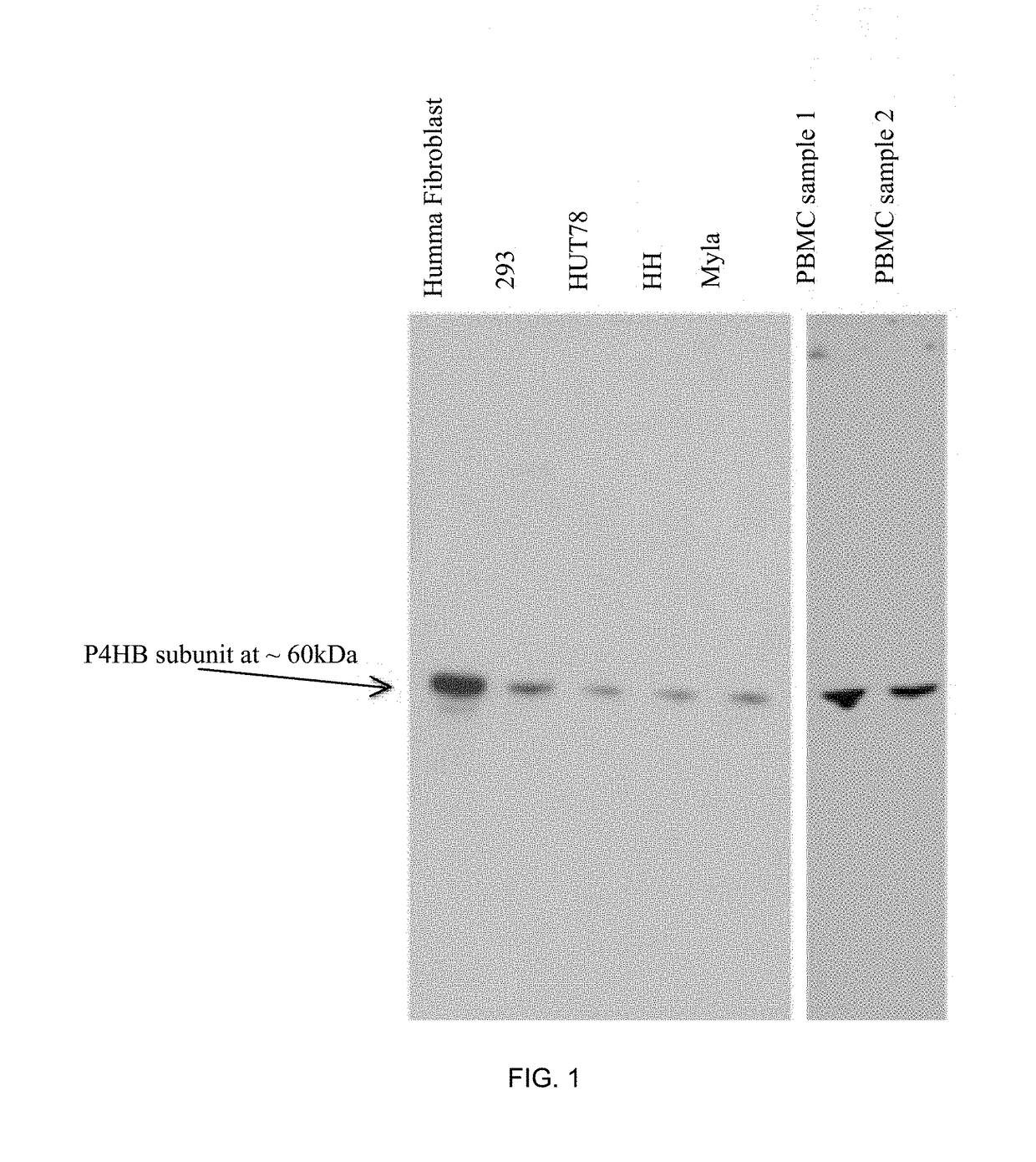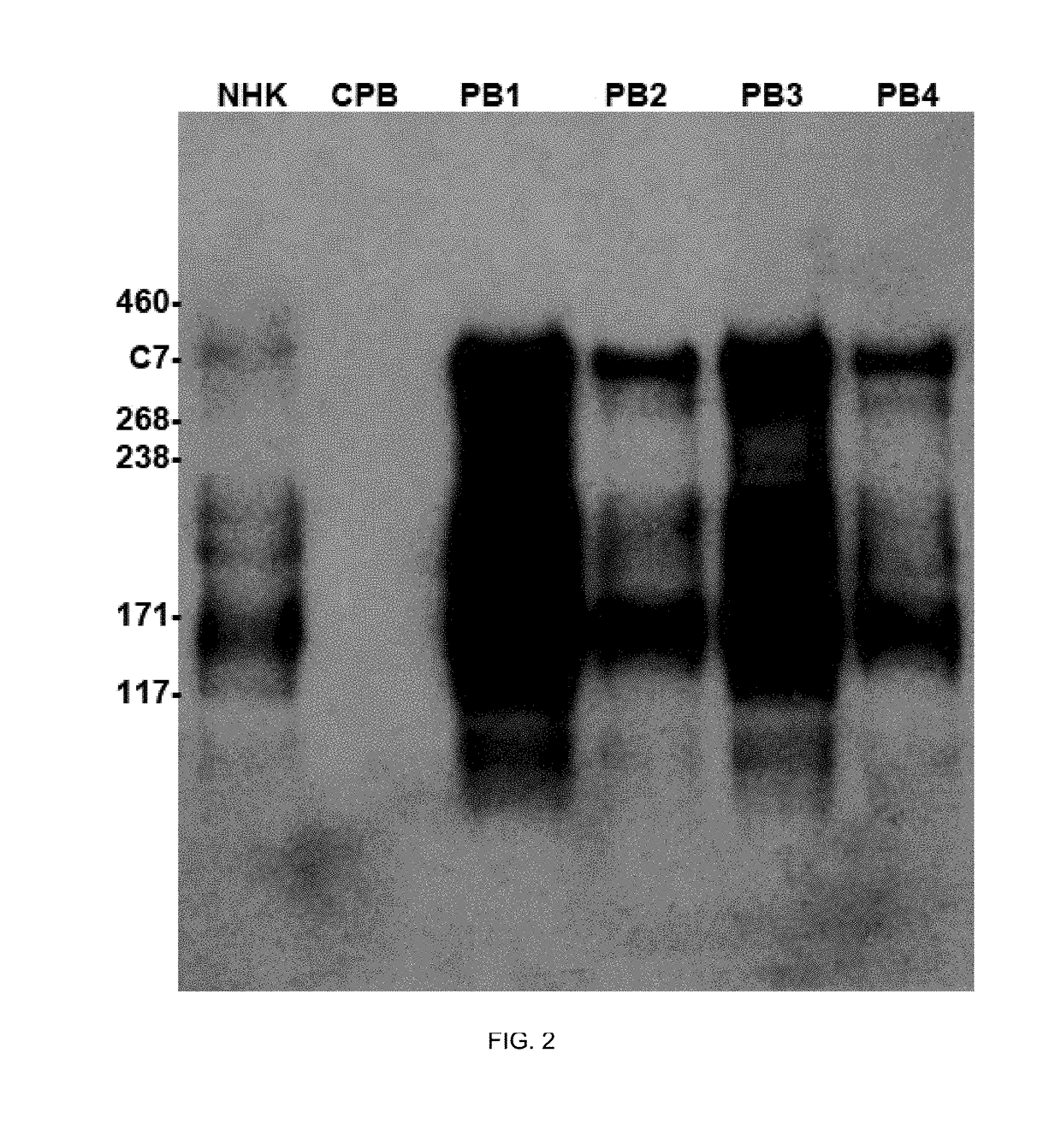Treatment of epidermolysis bullosa by injection of autologous collagen vii overexpressing leukocytes
- Summary
- Abstract
- Description
- Claims
- Application Information
AI Technical Summary
Benefits of technology
Problems solved by technology
Method used
Image
Examples
example 1
Cell reprogramming of autologous cells as treatment for Recessive Dystrophic Epidermolysis Bullosa (RDEB)
[0091]Recessive dystrophic epidermolysis bullosa (RDEB) is a severe blistering disorder caused by deficiency of type VII collagen (C7) at the dermal-epidermal basement membrane zone (BMZ). Provided herein are two alternative clinically viable cell re-programming treatment strategies to restore C7 and reverse RDEB disease progression. First, is a method to gene-modify autologous PBMCs for transient systemic C7 expression, which will deliver C7 to the BMZ and promote anchoring fibril formation for 1-3 months. The studies will complete the requisite in vitro and in vivo testing for regulatory filings to FDA. Second, the Immune System Programming (ISP™) platform is an ex vivo culture system can be used to produce autologous C7 expressing plasmablasts. Long-term engraftment of ISP™ plasmablasts offers sustained systemic delivery of functional C7.
[0092]Electroporation-mediated delivery...
example 2
[0103]C7 overexpression in human peripheral blood mononuclear cells (PBMCs) and in CD19+ human plasmablast. While initial attempts to detect C7 in the supernatant from both PMBCs electroporated with naked DNA encoding C7 and ISP™ plasmablasts were negative, due to the large size of the COL71A expression cassette, the use of an optimized minimal backbone vector to improve the electroporation transduction efficiency was highly successful in expressing high levels of C7 in primary human plasmablasts. As can be seen in FIG. 2, unconcentrated supernatants of plasmablast cultures (PB1-4) show dramatically higher levels of C7 (perhaps tenfold if not more), compared to normal human keratinocytes (NHK). Taking into account that the keratinocyte medium was concentrated 100 fold prior to loading on the blot, this suggests that transfected plasmablasts may have expressed up to one thousand fold more C7 compared to normal keratinocytes. While keratinocytes (the major contributor of C7 to the BMZ...
PUM
| Property | Measurement | Unit |
|---|---|---|
| Defects | aaaaa | aaaaa |
Abstract
Description
Claims
Application Information
 Login to View More
Login to View More - R&D
- Intellectual Property
- Life Sciences
- Materials
- Tech Scout
- Unparalleled Data Quality
- Higher Quality Content
- 60% Fewer Hallucinations
Browse by: Latest US Patents, China's latest patents, Technical Efficacy Thesaurus, Application Domain, Technology Topic, Popular Technical Reports.
© 2025 PatSnap. All rights reserved.Legal|Privacy policy|Modern Slavery Act Transparency Statement|Sitemap|About US| Contact US: help@patsnap.com


